Do you know what makes F1, F2, F1B, and F2B Goldendoodles different? These labels are key to understanding your future furry friend’s genetics, coat type, and how well they could fit with your allergy needs.
Goldendoodles come in different types, and their looks and genetics could change a lot as per their generation and their parents. When we talk about F1, F1B, F2, F2B, and multigenerational Goldendoodles, we are actually talking about the different mixes of Goldendoodle breeds. So without further ado, let me explain and compare these puppy generations for you in detail!
What Is The Meaning Of “F” In Goldendoodle Breeding?
In Goldendoodle breeding, the “F” stands for the generation of the dog, showing how far it is from its original purebred parents. The number after the “F” tells you which generation the dog is from. For example, an F1 Goldendoodle has a Poodle and a Golden Retriever as parents, that make it the first generation.
An F2 Goldendoodle’s parents are both F1 Goldendoodles, and so on. When you breed two F2 Goldendoodles, you get what’s called a “Multigen,” which just means it’s from multiple generations of Goldendoodles.
The letter “B” in this context means backcross. This is when a Goldendoodle is bred back to one of its original breeds, either a Golden Retriever or a Poodle. It is done to try and keep the puppy’s genetics evenly split between the two breeds.
What are Goldendoodle Furnishings?
Goldendoodle furnishings are about the genes that make their hair grow long, especially on their face and muzzle.
Golden Retrievers don’t have these genes, so their face hair is short and smooth. Poodles have two of these genes, which is why they have long hair on their face if not trimmed.
These genes are strong, so even one gene can make a Goldendoodle’s face have long hair, giving them the typical “Doodle” look. But, for a Goldendoodle to not shed hair, it needs two of these genes.
The type of coat a Goldendoodle gets, like if it’s curly or wavy, depends on another set of genes related to curls. Golden Retrievers don’t have these curl genes, but Poodles have two.
So, F1 Goldendoodles (the first mix generation) usually have wavy coats because they get one curl gene. If a Goldendoodle gets two curl genes, their coat will be more like a Poodle’s. If they don’t get any, their coat will be straight or just a little wavy.
Breeders can now test for these furnishing and curl genes, which wasn’t possible before. This testing helps them know more about what kind of coat their
Goldendoodles will have, like if they’ll shed a lot or have straight hair, without having to guess. Before these tests, people thought curly coats meant less shedding, but now we know that shedding and curliness are caused by different genes.
What Is An F1 Goldendoodle?
An F1 Goldendoodle which has the mix of a pure Golden Retriever and a pure Standard Poodle, is the first generation of Goldendoodle that makes the puppy half Poodle and half Golden Retriever. They’re a good choice for families with mild allergies because of this mix.
This type of Goldendoodle is what most people think of when they hear the name. Their looks could change a lot, though. Some may shed their fur like Golden Retrievers, while others may not shed much at all. Their coats could be wavy, smooth, or curly, relying on which parent they take after more.
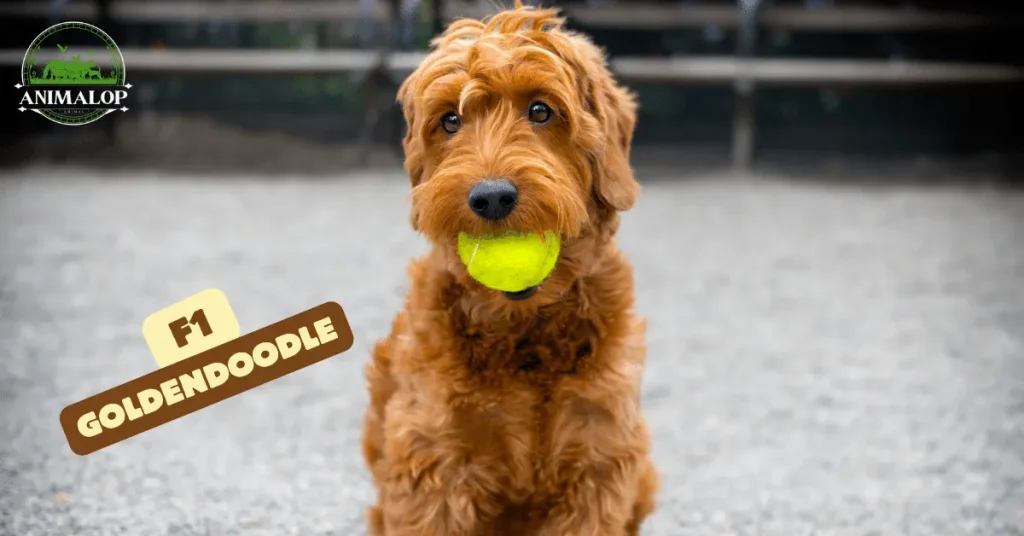
F1 Goldendoodle Quick Breed Profile
What Is An F1b Goldendoodle?
An F1b Goldendoodle is a dog that’s mostly Poodle, with 75% of Poodle and 25% of Golden Retriever in its mix. This happens when an F1 Goldendoodle, which is half Golden Retriever and half Poodle, is bred with a Poodle again.
The idea is to get a puppy that sheds less and is better for people with allergies, thanks to the Poodle’s curly, low-shedding coat. F1b Goldendoodles tend to be more sensitive and have more energy than other types of Goldendoodles.
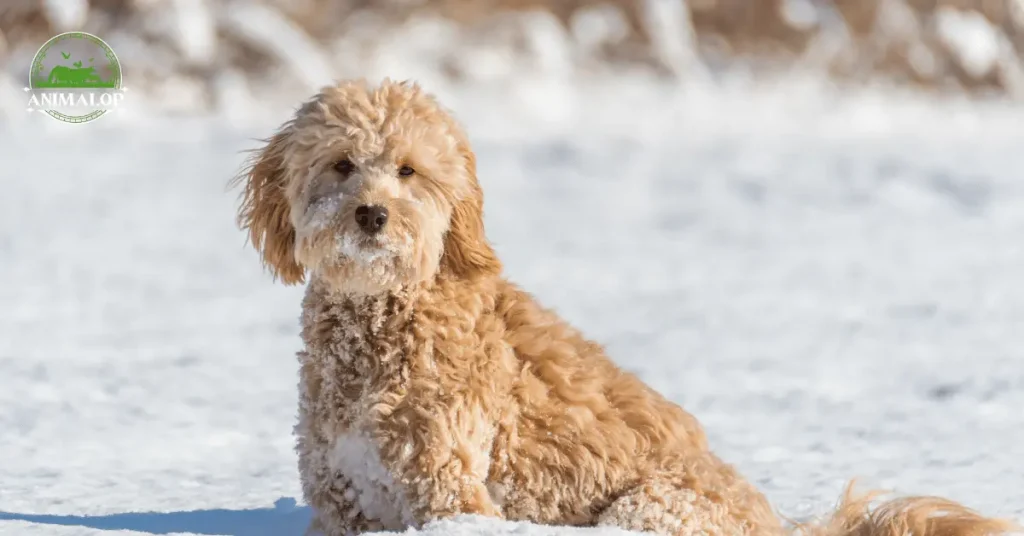
The “b” in F1b refers to “backcross,” that means breeding a mixed dog back with one of its original breeds. While it’s more common for the backcross to be with a Poodle to keep the coat hypoallergenic, technically, an F1b could also be bred with a Golden Retriever, making the dog more like a Golden Retriever in terms of shedding and personality. However, if you’re on a hunt-up for a dog that’s suitable for allergic patients, you’d want the F1b to be 75% Poodle.
So, the F1b Goldendoodle is like a special version of the mix, with an extra touch of Poodle traits for those looking for a curly, allergy-friendly dog.
F1B Goldendoodle Quick Breed Profile
What Is F2 Goldendoodle?
An F2 Goldendoodle is when two F1 Goldendoodles, which are already a mix of Golden Retriever and Poodle, are bred together. By breeding them, you could get the puppies which are a mix of 50% Golden Retriever and 50% Poodle. But, even with this mix, there’s a chance some of the puppies will shed their fur. The F2 generation could also really vary in what kind of coat they have, more than the first generation, because of how genes mix and match.
Some puppies might end up with two genes for the Golden Retriever’s straight coat, which means they could shed quite a bit. People who like both Poodle and the Golden Retriever traits love this generation and are okay with any type of coat, whether it sheds or not.
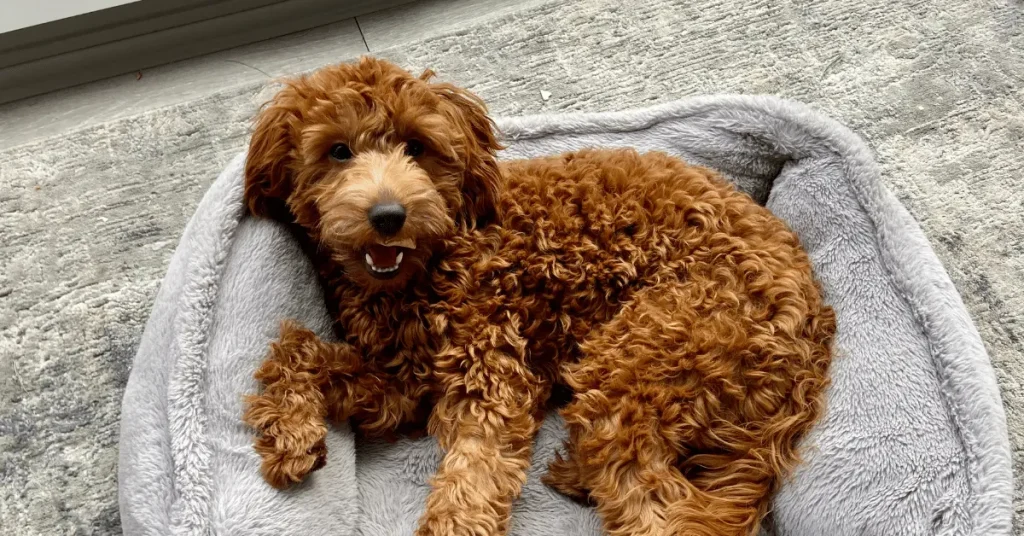
F2 Goldendoodle Quick Breed Profile
What Is An F2B Goldendoodle?
An F2B Goldendoodle is a special mix that comes from breeding an F1 Goldendoodle (half Golden Retriever, half Poodle) with an F1B Goldendoodle (mostly Poodle, with a little Golden Retriever), or by breeding an F2 Goldendoodle back to a Poodle. This mix ends up being about 62.5% Poodle and 37.5% Golden Retriever.
F2B type of Goldendoodle is a good choice for families with strong allergies because they’re designed to be more allergy-friendly and often don’t shed much.
Mostly, people like this mix because it still has a good amount of Golden Retriever traits but with less shedding. You can find F2B Goldendoodles in various different sizes, from extra small to large.
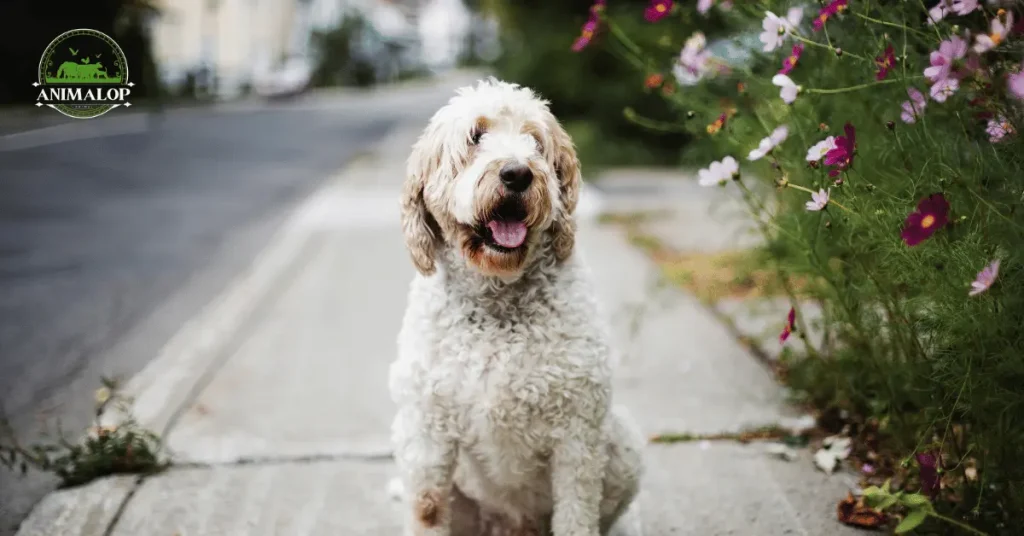
F2B Goldendoodle Quick Breed Profile
F1 Doodle Vs F2 Vs F1B Vs F2B: In-depth Comparison
History
In the 1990s, breeders in Australia and the United States, including someone named Ryan Harvey, started mixing Golden Retrievers and Poodles a lot, and they called this mix “goldendoodle.” The “doodle” part of the name comes from this mix too. The name “goldendoodle” combines “golden” from Golden Retriever and the idea from “Labradoodle,” which is a mix of Labrador Retriever and Poodle.
Mixing Poodles with Golden Retrievers actually started before the 1990s. For example, Monica Dickens, who was the great-granddaughter of the famous writer Charles Dickens, mixed these two breeds back in 1969. This mix can sometimes be healthier than either of the parent breeds, but there’s also a chance for the puppies to inherit health issues from both sides.
The main reason breeders started making goldendoodles was to offer an alternative to the already popular labradoodle. At first, they only used standard-sized Poodles for the mix, but later, they also started using smaller Poodles to make smaller goldendoodles.
Since goldendoodles are a mixed breed, big dog clubs like the AKC, FCI, or British Kennel Club don’t officially recognize them. Goldendoodles have evolved from the first generation mixes to now include multigenerational or “multigen” goldendoodles, which are made by breeding goldendoodles with other goldendoodles.
Appearance
Considering the appearance, F1B Goldendoodles dogs mainly have curly coats that look more like a Poodle’s. Their coat color could also remind you of a Golden Retriever, but they can actually be many different colors. They have floppy ears and their face hair can be curly or straight, showing there’s a lot of variety even within this group. Plus, they are bred in several sizes for different family needs.
Next, the F1 Goldendoodles show a great range of coat types, sizes, and colors, which comes from the mix of traits they get from their Golden Retriever and Poodle parents. Their coats tend to be wavy and the size can vary, especially if one of their parents was a mini Poodle. This makes them pretty unpredictable in how they look, which a lot of people like.
Meanwhile, there are the F2 Goldendoodles. They typically have a face shape that’s not too skinny like a Poodle’s or too wide like a Golden Retriever’s, but just right in the middle. Their bodies are more evenly shaped compared to the F1s, mixing the Poodle’s classy look with the Golden Retriever’s solid build. This generation mixes the best looks of both breeds.
On the other hand, the F2B Mini Goldendoodles keep things interesting with their coats that can be wavy, flat, or curly, just like the first generation. It’s hard to guess what their coat will end up looking like when they’re grown up, which makes them a surprise package.
Size
The first Goldendoodles made were the F1 standard size, mixing a standard Poodle with a Golden Retriever. These big dogs normally weigh between 50-75 pounds when they’re fully grown, but sometimes they can weigh even more than 100 pounds.
Second generation Goldendoodles, or F2s, come in different sizes. You can find mini ones that are 13-20 inches tall, small standard ones that are 17-20 inches tall, and large standard ones that are 20-24 inches tall. Depending on how tall they are, these dogs can weigh from 15 to 90 pounds.
The smallest F1b Goldendoodles, known as Toy Goldendoodles, is known to have 10 to 25 pounds weight when they go adult.
F2b Mini Goldendoodles are a little bigger, weighing between 16 and 30 pounds and standing 14 to 20 inches tall. Medium F2B Goldendoodles are even larger, with a weight of 31 to 50 pounds and a height of 18 to 20 inches.
Temperament
F1 Goldendoodles mix Golden Retriever friendliness and Poodle smarts, resulting in sociable and clever puppies that don’t shed a lot.
F2 Goldendoodles, the second mix, are awesome for anyone, whether you have a big family or live alone. They inherit the best traits from both their Golden Retriever and Poodle parents, so they’re easygoing and fun to be around.
F1B Goldendoodles are fantastic for families. They’re super friendly, love kids, and really enjoy hanging out with their human pack. Plus, they’re eager to learn and please, making training a breeze.
F2B Goldendoodles are the loyal types, always aiming to make their owners happy. They’re smart, hardly shed, if at all, safe pick for patients of allergies.
Shedding
The mix of the Poodle and the Golden Retriever, F1 Goldendoodles shed less than a Golden Retriever but more than a Poodle. When a Poodle is bred with an F1 Goldendoodle, the F1B Goldendoodle is produced, which sheds even less because it’s mostly Poodle.
You won’t find the F2 Goldendoodles the best pick if you’re concerned about shedding. There’s a pretty high chance, about 75%, that they’ll shed.
F2B Goldendoodles are a mixed bag when it comes to shedding. Some don’t shed at all, while others might shed slightly or even as much as a Golden Retriever. It is literally dependant on the mix of genes they inherit from their F1B parent.
Price
F1B Goldendoodle puppies are really popular and because of that, they tend to be pricier. The starting price for a standard size F1 Goldendoodle is around $3200. For an F1B Goldendoodle, depending on dog’s family background and the breeder, prices could range from $1500 to $6000.
F2 Goldendoodles usually have prices between $2200 and $4200. Sometimes, F2 Goldendoodles could be more expensive than F1s because people can more easily guess what they will look like, and they like knowing that.
Furthermore, this generation breed is more effort-taking than F1 Goldendoodles. However, some people argue that paying more for later generations doesn’t really make sense because the mix of the breeds isn’t as strong.
The price for an F2B Mini Goldendoodle depends on what you’re looking for and how the breeder sets their prices. The standard Poodle mix is the most common and can cost between $800 and $1800. If you prefer a smaller dog, like a Miniature Goldendoodle, be prepared to pay between $2500 and $4000 for an F2B Mini when it’s fully grown.
Health Concerns
Starting with the F1 Goldendoodles, these guys get a health boost from being a mix of two different breeds Poodle and Golden Retriever. This mix can make them healthier overall, a perk called “hybrid vigor.”
F1B Goldendoodles, which are more Poodle than Golden Retriever, may still face health problems common to both of these breeds. This includes things like hip problems, heart conditions, skin issues, and several eye problems such as cataracts and glaucoma.
Moving on to F2 Goldendoodles, they’re pretty tough dogs but aren’t immune to health issues. They can have similar problems as the F1Bs, like hip and heart issues, eye troubles, certain types of cancer more common in Golden Retrievers, thyroid problems, a bleeding disorder called von Willebrand’s Disease, bloat (a serious stomach problem), and hormonal disorders.
F2B Goldendoodles can also inherit health issues from both Golden Retrievers and Poodles, plus they might have their own unique problems. They’re prone to eye conditions, hip dysplasia, heart conditions, Addison’s Disease, and skin problems. Keeping them well-groomed can help with skin issues.
Goldendoodle Diet
The best food for Goldendoodles should have good protein like beef, chicken, lamb, turkey, pork, and venison. These help your dog grow strong and keep making important building blocks for their body.
Besides protein, Goldendoodles also need healthy fats in their diet, like fish oil or flaxseed oil, which are good for their skin and coat. They also need a mix of fruits and vegetables for vitamins and minerals, which help keep their immune system strong and their digestion smooth. Lastly, make sure their food has some whole grains or other sources of carbohydrates for energy, especially if they’re active dogs.
Grooming Your Goldendoodle
Goldendoodle’s coat requires great care to keep them looking best and living happily. You’ll need to brush them often with a slicker brush, which works well for their thick and sometimes curly fur.
Curly coats need brushing every day, while wavy or straight coats can be brushed every other day to avoid knots and keep their fur shiny. They don’t need baths all the time, just once a month or when they’re really dirty, to keep their skin from getting dry. Make sure to utilize the shampoo specifically manufactured for puppies and dogs.
They’ll need a haircut every 6 to 12 weeks, and sometimes their face hair needs trimming more often to keep it out of their eyes and mouth.
Trimming their nails regularly is important too, so they stay comfortable and avoid any foot problems. Because they have floppy ears, you’ll need to check and clean their ears regularly to prevent infections, and be careful not to get water in their ears when you give them a bath.
Training
Training your Goldendoodle puppy in their first year is really important to help them become good, obedient dogs. These puppies are smart and like to make their owners happy, which makes teaching them easy peasy.
It’s best to start teaching them right away to set good habits early. Using treats and praise to show them they’re doing something right works well. Keeping training short and fun helps keep their attention.
Clicker training, where you click to mark the right behavior, then give them a treat, is a great way to teach them quickly.
Avoid using scary or painful methods like shock collars, as these can make dogs act out or become scared. Training with kindness and rewards not only helps your puppy learn better but also makes them trust and love you more. Being consistent, patient, and positive will help your Goldendoodle learn to be a well-behaved dog as they grow up.
Goldendoodles Generations
For Golddoodles breeders, you are suggested to check the approved breeder list from the Goldendoodle Association of North America. Breeders on this list have to meet certain rules in the United States, including health checks for the dogs.
| Generation | Poodle Percentage | Golden Retriever Percentage | Details |
| F1 | 50% | 50% | First generation, Poodle x Golden Retriever. |
| F1B | 75% | 25% | Poodle x an F1 Goldendoodle. |
| F1BB | 87.5% | 12.5% | Poodle x F1B Goldendoodle. |
| F2 | 50% | 50% | Second generation, F1 x F1 Goldendoodles. |
| F2B | 62.5% | 37.5% | Poodle x F2 Goldendoodle |
| F2BB | 81.25% | 18.75% | Poodle x F2B Goldendoodle |
| F3 or Multi-generation | Varies | Varies | Several generations of Goldendoodle breeding, involving backcrossing to the Standard Poodle. |
Goldendoodles Facts
- Goldendoodles enjoy being around water.
- Goldendoodles could have different coat colors.
- Goldendoodles tend to be super friendly.
- Goldendoodles are excellent as service animals.
- Goldendoodles are naturally athletic.
FAQs
Final Thoughts
I’ve shared a detailed guide above to help you wrap your head around the various Goldendoodle types. Whether you’re hunting for a dog that’s great for allergies, easy to train, or just the right fit for your family, there’s a Goldendoodle out there for you. Keep in mind, picking the right generation and style depends on what fits your vibe.

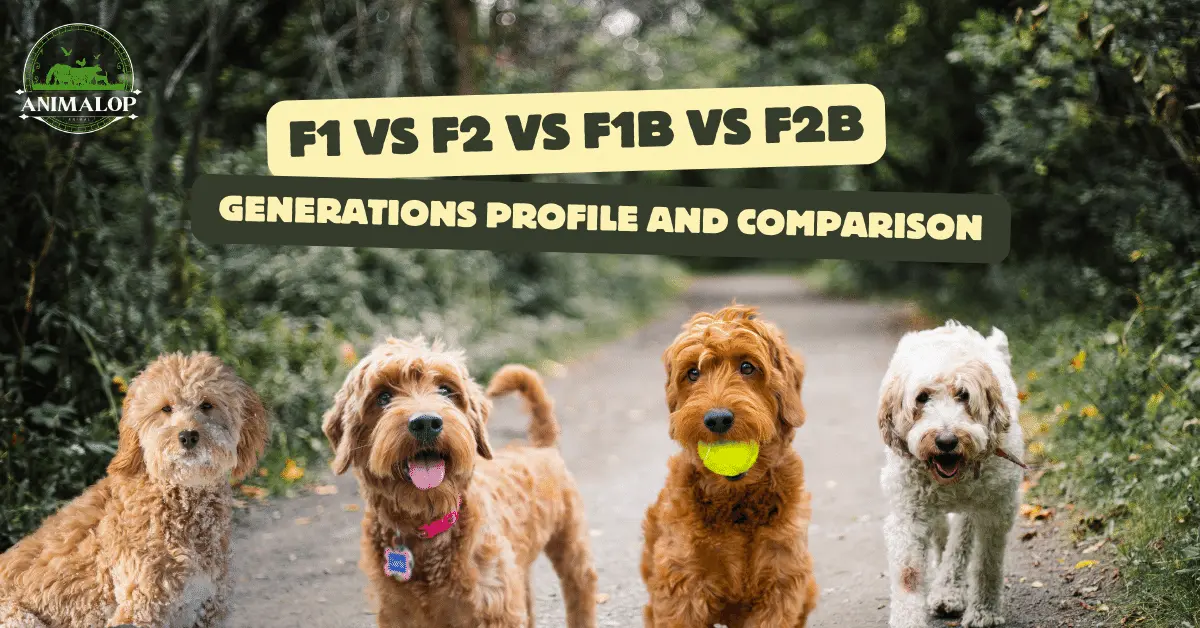
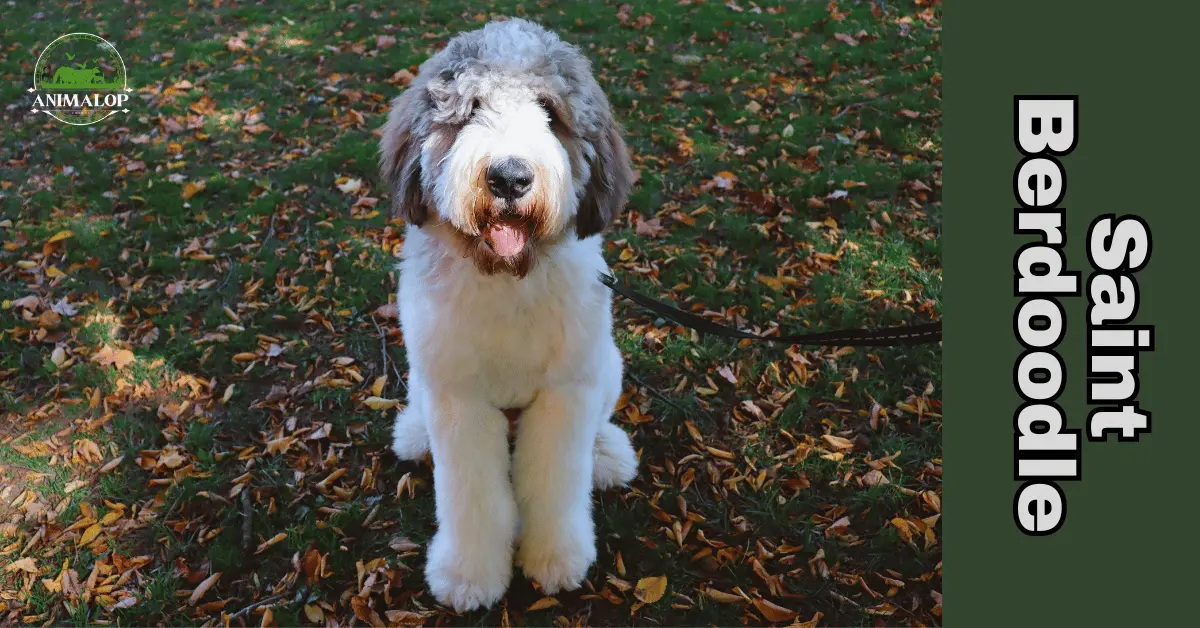
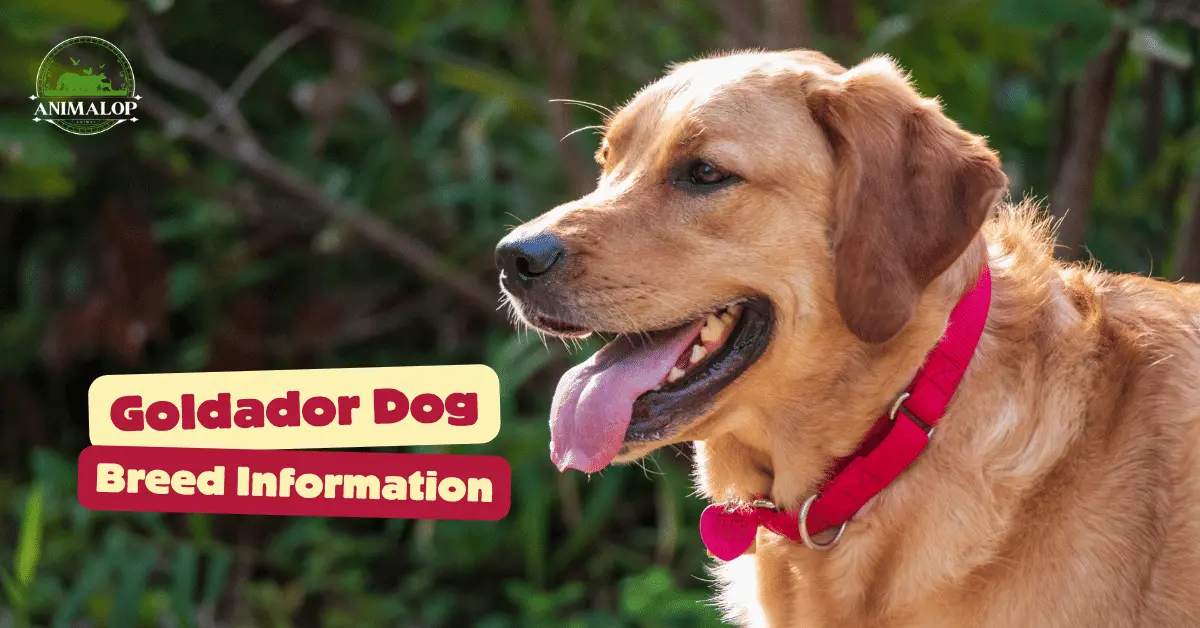
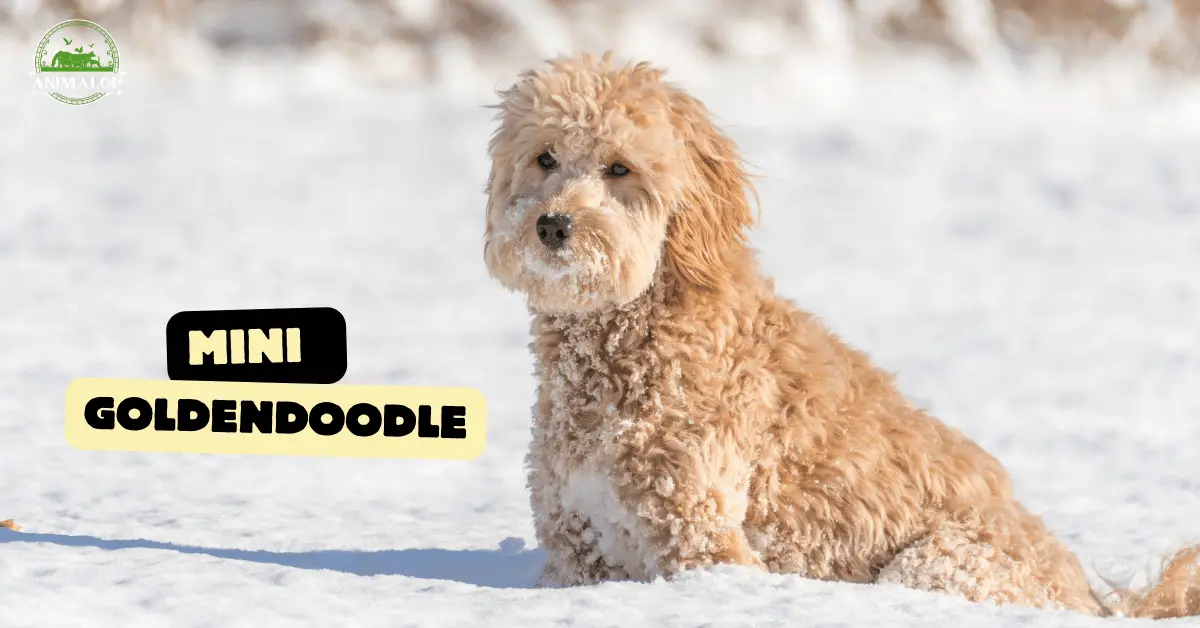
One Comment on “F1 Vs F2 Vs F1B Vs F2B: Generations Profile And Comparison”